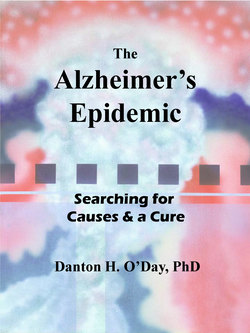Читать книгу The Alzheimer's Epidemic - Danton O'Day - Страница 30
На сайте Литреса книга снята с продажи.
Types of Dementia
ОглавлениеWhat exactly is dementia? Dementia is an all-inclusive term that describes a variety of conditions and diseases that result from abnormal neuron function and/or death. Alzheimer’s is the most common form of dementia. Your doctor might use criteria provided by the Diagnostic and Statistical Manual of Mental Disorders to determine if dementia exists. These criteria include a decline in one’s memory along with one or more symptoms from a list.
This list includes:
•The ability to produce coherent speech;
•The ability to understand spoken language or written words;
•The ability to identify objects;
•The ability to think in an abstract way or to make sound judgements;
•The inability to function properly in daily life;
•The ability to plan and carry out complex tasks; and,
•The ability to carry out motor activities.
In addition to Alzheimer’s disease, there are seven other common types of dementia that are summarized in Table 3.1.
Several dementias have Alzheimer’s disease-like symptoms and this is why it is important for proper diagnostic tests to be carried out so that a disease-based therapeutic approach can be started. There are two other types of dementia listed in Table 3.1 that should be addressed as well. The extensive news coverage of “Mad Cow Disease” led many to be leery of eating beef. Mad cow disease is a prion-based disease. Prions are proteins that have misfolded. When they enter the body, prions induce proteins that are folded normally to misfold, thus interfering with normal cellular function. In the brain this leads to miscommunication between neurons and neuron death observed as holes in the brain.
A second common cause of dementia is linked to the presence of Lewy bodies in the brain. Lewy bodies are precipitates or accumulations that are rich in the protein alpha-synuclein. They cause Parkinson’s disease and dementia linked to Lewy bodies. Alpha-synuclein makes up as much as 1% of the protein in brain neurons. Lewy bodies are fundamentally similar to amyloid plaques except the former consist of deposits of the protein alpha-synuclein while the latter are made up of amyloid beta. In addition, Lewy bodies form inside of neurons while amyloid plaques form outside of them. When they do appear, Lewy bodies interfere with nerve cell organization and function leading to malfunction of nerve cell communication, which underlies the dementia that is observed.
Table 3.1. Common types of dementia.
It is important to realize that certain other conditions can result in symptoms that mimic dementia. These conditions include depression, drug use, excessive use of alcohol, side effects from medications, thyroid problems and certain vitamin deficiencies, to name the most common. When those conditions are removed or corrected then the dementia-like symptoms disappear.
